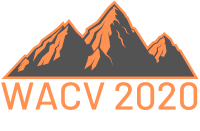-
Multi-Level Representation Learning for Deep Subspace Clustering
AbstractThis paper proposes a novel deep subspace clustering approach which uses convolutional autoencoders to transform input images into new representations lying on a union of linear subspaces. The first contribution of our work is to insert multiple fully-connected linear layers between the encoder layers and their corresponding decoder layers to promote learning more favorable representations for subspace clustering. These connection layers facilitate the feature learning procedure by combining low-level and high-level information for generating multiple sets of self-expressive and informative representations at different levels of the encoder. Moreover, we introduce a novel loss minimization problem which leverages an initial clustering of the samples to effectively fuse the multi-level representations and recover the underlying subspaces more accurately. The loss function is then minimized through an iterative scheme which alternatively updates the network parameters and produces new clusterings of the samples. Experiments on four real-world datasets demonstrate that our approach exhibits superior performance compared to the state-of-the-art methods on most of the subspace clustering problems.
Related Material
[pdf] [video][bibtex]@InProceedings{Kheirandishfard_2020_WACV,
author = {Kheirandishfard, Mohsen and Zohrizadeh, Fariba and Kamangar, Farhad},
title = {Multi-Level Representation Learning for Deep Subspace Clustering},
booktitle = {Proceedings of the IEEE/CVF Winter Conference on Applications of Computer Vision (WACV)},
month = {March},
year = {2020}
}
These WACV 2020 papers are the Open Access versions, provided by the Computer Vision Foundation.
Except for the watermark, they are identical to the accepted versions; the final published version of the proceedings is available on IEEE Xplore.
Except for the watermark, they are identical to the accepted versions; the final published version of the proceedings is available on IEEE Xplore.
This material is presented to ensure timely dissemination of scholarly and technical work.
Copyright and all rights therein are retained by authors or by other copyright holders.
All persons copying this information are expected to adhere to the terms and constraints invoked by each author's copyright.

